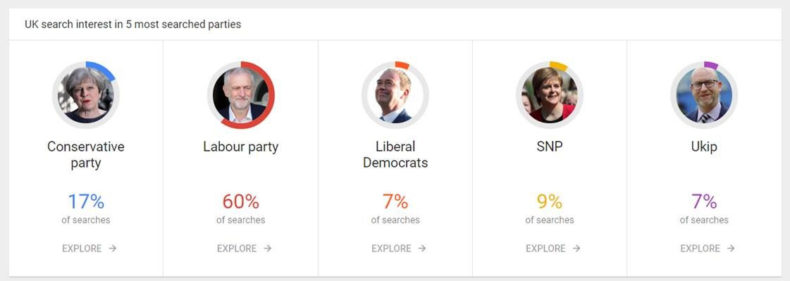Britain’s election shows why you should use digital data with caution

It’s been a regular theme of mine that there is much to be learned from canny analysis of online data. But there are plenty of traps for the unwary, as shown by the latest Google Search Trends data. This free data is often a great source of changing trends in public interest in an issue, brand or product. But it only shows interest, not affinity or support.
Which is why Labour supporters shouldn’t be breaking out the champagne at the news that Labour is dominating online searches, picking up 60% of all search traffic at the moment. That may be huge numbers of people wanting to know what’s up with Labour; what it isn’t is a poll showing Labour are on 60% of the vote. An obvious distinction, you might think, but the sort of distinction which is often forgotten when looking at online data.
Once you get beyond the headline volume statistics, there is much insight to be gained which puts those headlines in context, such as the popularity of the question ‘how many seats will Labour lose?’. In this case, attention is not all positive.
The lesson for brands and organisations? Make full use of data such as Google Trends to understand changing public interests – but always look beyond the headline figures.
Leave a Reply